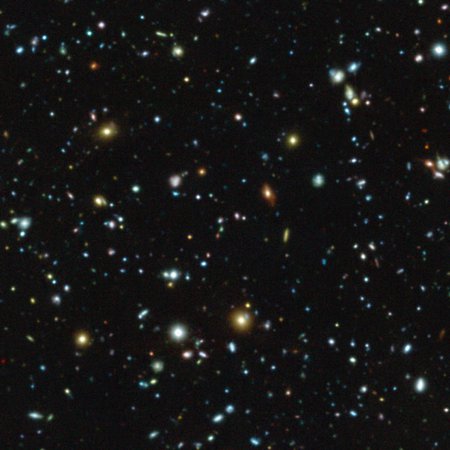New map of the universe shows mega structures

The image is a representation of the distribution of matter in the local universe and shows how matter flows, i.e. along which trajectories (thin lines) the galaxies move. The expansion of the universe is not taken into account here. Dense regions indicate the confluence of a multitude of such matter streams – the locations of cosmic superclusters. Sparse regions are mostly devoid of matter.
Credit: A. Valade et al. 2024An international research team led by the Leibniz Institute for Astrophysics Potsdam (AIP) has developed a new method of imaging the universe and created a fascinating map of the cosmos based on analysing the motions of 56,000 galaxies. The work shows impressive cosmic structures and maps the large-scale interconnectedness of galaxy superclusters in our universe.
Gravity is the dominant force in the universe: it keeps the moon around the earth, the planets in their orbits around the sun and connects our Milky Way with its neighbourhood, the so-called Local Group. Even the Local Group is only a small part of the larger Virgo galaxy cluster, which comprises around 2000 galaxies and was thought to be part of the even larger structure Laniakea. The new study raises doubt if Laniakeia actually is our home supercluster or if it even exists.
Mapping the universe has always been one of the most challenging tasks in astronomy. Inaccurate observations, observational errors and incomplete data make this work extremely difficult. In addition, the observed galaxies make up only a small part of the total mass in the universe, as much of the matter exists in the form of invisible dark matter. Furthermore, galaxies are not bound to be formed in such a way that they accurately trace the underlying matter well, which makes them an uncertain indicator of the matter distribution in the universe. Therefore, in order to create a map of our cosmic environment, researchers also look at the motion of galaxies. On the one hand, galaxies move away from us with the expansion of the universe, but on the other hand they also attract each other due to gravity. These movements can be mapped and reveal the cosmic currents – the rivers and gulf-streams throughout the cosmos on which galaxies move. Since the motion is caused by gravity, it can thus be used to see the invisible.
A research team led by cosmologist Aurelien Valade first author of the study now published in Nature Astronomy, and Noam Libeskind, head of the Cosmography group at the AIP, used data from the Cosmic Flows-4 catalogue with the motions of 56,000 galaxies to map the local universe. Since the measurements of each galaxy’s velocity is error prone and fairly uncertain, there are various possible cosmographic maps that would fit the observational data. Thus, the team developed a new approach: a ‘probabilistic’ map of the universe. Such a map indicates how likely it is that a certain feature, such as a “basin of attraction”, actually exists. A basin of attraction is a region which, absent the cosmic expansion, would collapse to a single point. With this new method, the researchers obtained a reliable picture of the large-scale distribution of matter and revealed astonishing structures of our cosmic neighbourhood. Laniakea, the supercluster to which many believed that our galaxy belongs, is probably merely an appendage of the much larger Shapley basin. It may not even exist as a separate entity. Even more astonishing is the fact that the Sloan Great Wall – an immense wall composed of hundreds of thousands of galaxies - at around a thousand trillion trillion cubic light years is currently the largest known structure in this cosmic network of galaxies.
Noam Libeskind concludes: ‘It is perhaps unsurprising that the further into the cosmos we look, we find that our home supercluster is more connected and more extensive than we thought. Discovering that there is a good chance that we are part of a much larger structure is exciting. At the moment it’s just a hint: more observations will have to be made to confirm the size of our home supercluster.’
The work was carried out in collaboration with scientists from the University of Hawaii, the University of Jerusalem and the University of Paris-Saclay using data from the Cosmic Flows-4 catalog. The team also produced an interactive map as well as a movie to be found here:
Further information
Publication:
A. Valade et al., 2024: Identification of basins of attraction in the local Universe, Nature Astronomy, https://www.nature.com/articles/s41550-024-02370-0, doi:10.1038/s41550-024-02370-0
More about the cosmography research group at AIP:
Images
The image is a representation of the distribution of matter in the local universe and shows how matter flows, i.e. along which trajectories (thin lines) the galaxies move. The expansion of the universe is not taken into account here. Dense regions indicate the confluence of a multitude of such matter streams – the locations of cosmic superclusters. Sparse regions are mostly devoid of matter.
Big screen size [1000 x 1398, 180 KB]
Original size [3000 x 4196, 1.9 MB]



